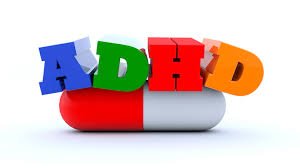FDA permits to sell first medical device for ADHD treatment
April 22, 2019 | Monday | News
ADHD is a common disorder that begins in childhood. Symptoms include difficulty staying focused and paying attention, difficulty controlling behavior and very high levels of activity
The U.S. Food and Drug Administration recently permitted marketing of the first medical device to treat attention deficit hyperactivity disorder (ADHD). The prescription-only device, called the Monarch external Trigeminal Nerve Stimulation (eTNS) System, is indicated for patients ages 7 to12 years old who are not currently taking prescription ADHD medication and is the first non-drug treatment for ADHD granted marketing authorization by the FDA.
"This new device offers a safe, non-drug option for treatment of ADHD in pediatric patients through the use of mild nerve stimulation, a first of its kind," said Carlos Peña, Ph.D., director of the Division of Neurological and Physical Medicine Devices in the FDA's Center for Devices and Radiological Health. "Today's action reflects our deep commitment to working with device manufacturers to advance the development of pediatric medical devices so that children have access to innovative, safe and effective medical devices that meet their unique needs."
ADHD is a common disorder that begins in childhood. Symptoms include difficulty staying focused and paying attention, difficulty controlling behavior and very high levels of activity. The diagnosis of ADHD requires a comprehensive evaluation by a health care professional. For a person to receive a diagnosis of ADHD, the symptoms of inattention and/or hyperactivity-impulsivity must be chronic or long-lasting, impair the person's functioning and cause the person to fall behind normal development for his or her age.
The Monarch eTNS System is intended to be used in the home under the supervision of a caregiver. The cell-phone sized device generates a low-level electrical pulse and connects via a wire to a small patch that adheres to a patient's forehead, just above the eyebrows, and should feel like a tingling sensation on the skin. The system delivers the low-level electrical stimulation to the branches of the trigeminal nerve, which sends therapeutic signals to the parts of the brain thought to be involved in ADHD. While the exact mechanism of eTNS is not yet known, neuroimaging studies have shown that eTNS increases activity in the brain regions that are known to be important in regulating attention, emotion and behavior.
The stimulation should feel like a tingling sensation on the skin, and the device should be used in the home under the supervision of a caregiver during periods of sleep. Clinical trials suggest that a response to eTNS may take up to 4 weeks to become evident. Patients should consult with their health care professional after four weeks of use to assess treatment effects.
The Monarch eTNS System's efficacy in treating ADHD was shown in a clinical trial that compared eTNS as the sole treatment, or monotherapy, to a placebo device. The FDA reviewed the Monarch eTNS System through the de novo premarket review pathway, a regulatory pathway for low- to moderate-risk devices of a new type. This action creates a new regulatory classification, which means that subsequent devices of the same type with the same intended use may go through the FDA's 510(k) premarket process, whereby devices can obtain marketing authorization by demonstrating substantial equivalence to a predicate device.
The FDA granted marketing authorization of the Monarch eTNS System to NeuroSigma.










